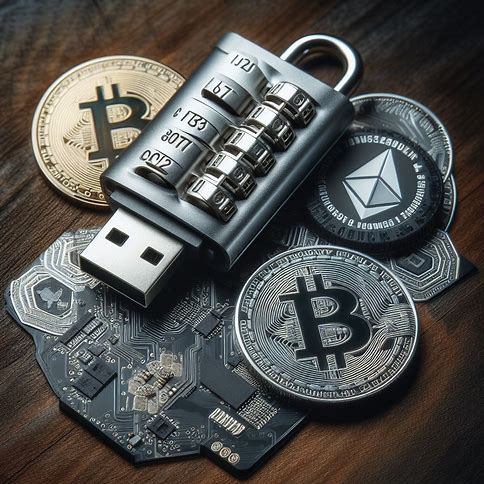Cryptocurrency networks face many security threats, posing significant risks to investors and users alike, with many hacking incidents happening on a yearly basis. Here are the most common network security threats in cryptocurrency and how to protect your assets or blockchain projects from them.
1. Phishing Attacks
Phishing attacks happen when malicious actors deceive users into divulging sensitive information, such as private keys or login credentials. Phishers often employ sophisticated social engineering techniques, crafting emails or messages that mimic legitimate communications from well-known cryptocurrency platforms.
Victims are lured to counterfeit websites, where their information is harvested. The implications of falling prey to a phishing attack can be dire, leading to unauthorized access to crypto wallets and the loss of assets.
Here’s an example of what a phishing attack. is: https://cryptoslate.com/hong-kong-authorities-issue-public-alert-about-fraudulent-crypto-exchange-masquerading-as-mexc-global/
Protecting your digital currencies and personal information from phishing threats involves a combination of user education, vigilance and technical safeguards. In short, learn to recognize the signs of phishing attempts, such as unsolicited requests for information and the use of HTTPS protocols on all cryptocurrency-related sites. Also, use two-factor authentication (2FA) to add an additional layer of security, making unauthorized access more challenging.
2. Sybil Attacks
In a Sybil attack, a single node creates multiple fake identities to gain a disproportionate influence over a network. This type of attack is particularly threatening to decentralized networks, where trust and consensus mechanisms are foundational. By controlling multiple nodes, an attacker can disrupt network operations, manipulate transactions, or even double-spend coins in some cases.
To counter Sybil attacks, networks employ various consensus mechanisms like Proof of Work (PoW) and Proof of Stake (PoS), which make it economically unfeasible or extremely difficult to control a majority of nodes. Additionally, implementing robust identity verification processes for nodes has helped reduce the risk of such attacks.
3. 51% Attacks
A 51% attack occurs when a single entity or group controls more than half of the mining power (hashrate) on a blockchain network. This majority control allows them to monopolize the creation of new blocks, enabling them to prevent transactions from being confirmed, reverse transactions and engage in double spending. While such attacks are more feasible on smaller, less secure networks, they pose a significant risk to the integrity and trust of a blockchain’s operations.
Preventive measures against 51% attacks include enhancing the network’s decentralization to dilute the mining power and employing advanced consensus algorithms that are resistant to such monopolization. Some networks also implement security protocols that automatically detect and counter unusual mining activity indicative of a 51% attack.
4. Malware and Ransomware
Cryptocurrency users and platforms are prime targets for malware and ransomware attacks. Malicious software can be designed to steal wallet keys, hijack computing power for mining (cryptojacking), or encrypt valuable data and demand a ransom in cryptocurrency. These attacks not only result in financial losses but can also severely damage an organization’s reputation and user trust.
To protect your assets from malware and ransomware attacks, you need robust cybersecurity measures, including regular software updates, advanced malware detection systems and comprehensive backup strategies. Also educate yourself on safe browsing practices and the importance of using reputable wallet and exchange services to reduce the risk of malware infections.
5. Man-in-the-Middle (MitM) Attacks
In MitM attacks, attackers intercept and possibly alter the communication between two parties without their knowledge. In the context of cryptocurrency transactions, this could mean intercepting the transaction details and redirecting funds to the attacker’s wallet. Public Wi-Fi networks are common venues for such attacks, given their typically lax security protocols.
Encryption is important to safeguard against MitM attacks. Using VPNs (Virtual Private Networks) when conducting transactions on public networks, using SSL/TLS encryption for data in transit and using end-to-end encrypted messaging for sensitive communications can significantly reduce the risks of MitM attacks.
6. Dusting Attacks
Dusting attacks are a relatively new but increasingly common threat. They occur when attackers send tiny amounts of cryptocurrency (dust) to a large number of wallet addresses. The goal is to breach the privacy of wallet owners by linking the dust transactions to identify the person or company behind each wallet. Once identified, these entities become targets for phishing scams or cyber extortion.
The defense against dusting attacks primarily involves awareness and privacy measures. As a wallet holder, monitor your accounts for unexpected small deposits. Use a service that automatically consolidates dust transactions and anonymizes them to help eliminate the risk associated with dusting attacks.
7. Flash Loan Attacks
Flash loan attacks are a unique form of attack common to decentralized finance (DeFi) platforms. They involve borrowing large amounts of cryptocurrency through a flash loan—a loan that is taken and repaid within the same transaction—and exploiting vulnerabilities in DeFi protocols to manipulate market prices, ultimately leading to significant financial gains for the attacker at the expense of other users or the platform itself.
The Beanstalk farm loan attack is a good example of a flash loan attack. The DeFi platform lost $182 million to a flash loan attack on April 17, 2022.
To combat flash loan attacks, DeFi platforms must rigorously audit their smart contracts and protocols for vulnerabilities. Implementing more stringent borrowing criteria and improving the overall security architecture of DeFi protocols can also reduce the risk of such attacks.
8. Smart Contract Vulnerabilities
Smart contracts are self-executing contracts with the terms of the agreement directly written into code. While they are one of the most innovative features of blockchain technology, they are also prone to vulnerabilities if not properly written and audited. Bugs or flaws in smart contract code can be exploited to drain funds from DeFi platforms or manipulate contract outcomes.
The DAO attack on the Ethereum network is an instance of hackers exploiting the smart contract vulnerabilities of a network.
To safeguard against smart contract vulnerabilities, developers should conduct thorough audits of smart contract code, use effective methods in smart contract development, and maintain a robust framework for continuous monitoring and updating of contracts to address any newly discovered vulnerabilities.
9. API Security Threats
Cryptocurrency exchanges and platforms rely heavily on application programming interfaces (APIs) to enable user interactions and data exchange. However, insecure APIs can be exploited to gain unauthorized access to sensitive data, user accounts and funds. Attackers can exploit vulnerabilities such as insufficient encryption, a lack of rate limiting, and exposed endpoints to launch attacks against cryptocurrency services.
Strengthening API security requires implementing rigorous authentication, encryption and access control measures. Regular security audits and testing, such as penetration testing and vulnerability scanning, are crucial in identifying and mitigating potential API security risks.
Frequently Asked Questions
1. How can I protect myself from phishing attacks in cryptocurrency?
Always verify the authenticity of communication, use two-factor authentication and never disclose private keys or sensitive information in response to unsolicited requests.
2. What is a 51% attack, and how likely is it to happen?
A 51% attack occurs when an entity gains control of over half of a network’s mining power, enabling them to manipulate transactions. While theoretically possible, it’s less likely on larger, more secure networks, such as the Bitcoin blockchain, due to the high cost and resources required.
3. Can quantum computing really break blockchain cryptography?
In theory, quantum computing has the potential to break current cryptographic algorithms. However, the technology is still in its early stages and the industry is working on developing quantum-resistant cryptography.
4. What are smart contract vulnerabilities and how can they be prevented?
Smart contract vulnerabilities are caused by flaws in the contract’s code, which can be exploited to conduct unauthorized actions. Prevention involves thorough auditing, secure coding practices, and continuous monitoring.
5. What steps can be taken to enhance API security on cryptocurrency platforms?
Implementing strong authentication protocols, encrypting data in transit, rate limiting and regularly conducting security audits can significantly enhance API security.
6. Are dusting attacks a serious concern and how can I prevent being targeted?
Dusting attacks aim to compromise privacy by tracing transactions. To prevent being targeted, monitor for small, unexpected transactions and consider using privacy-enhancing tools or services.











1 comment